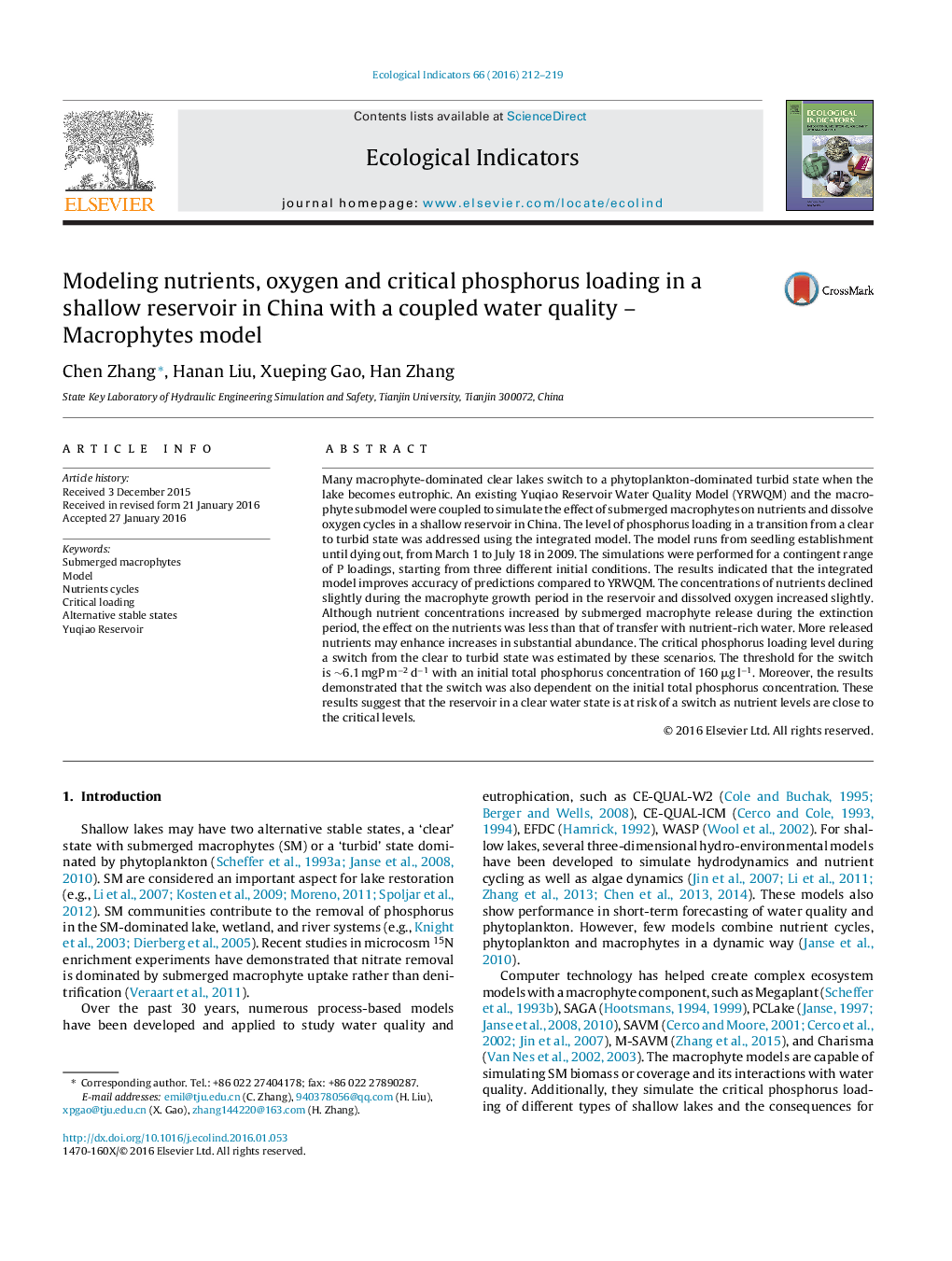| Article ID | Journal | Published Year | Pages | File Type |
|---|---|---|---|---|
| 6293437 | Ecological Indicators | 2016 | 8 Pages |
Abstract
Many macrophyte-dominated clear lakes switch to a phytoplankton-dominated turbid state when the lake becomes eutrophic. An existing Yuqiao Reservoir Water Quality Model (YRWQM) and the macrophyte submodel were coupled to simulate the effect of submerged macrophytes on nutrients and dissolve oxygen cycles in a shallow reservoir in China. The level of phosphorus loading in a transition from a clear to turbid state was addressed using the integrated model. The model runs from seedling establishment until dying out, from March 1 to July 18 in 2009. The simulations were performed for a contingent range of P loadings, starting from three different initial conditions. The results indicated that the integrated model improves accuracy of predictions compared to YRWQM. The concentrations of nutrients declined slightly during the macrophyte growth period in the reservoir and dissolved oxygen increased slightly. Although nutrient concentrations increased by submerged macrophyte release during the extinction period, the effect on the nutrients was less than that of transfer with nutrient-rich water. More released nutrients may enhance increases in substantial abundance. The critical phosphorus loading level during a switch from the clear to turbid state was estimated by these scenarios. The threshold for the switch is â¼6.1 mgP mâ2 dâ1 with an initial total phosphorus concentration of 160 μg lâ1. Moreover, the results demonstrated that the switch was also dependent on the initial total phosphorus concentration. These results suggest that the reservoir in a clear water state is at risk of a switch as nutrient levels are close to the critical levels.
Related Topics
Life Sciences
Agricultural and Biological Sciences
Ecology, Evolution, Behavior and Systematics
Authors
Chen Zhang, Hanan Liu, Xueping Gao, Han Zhang,
